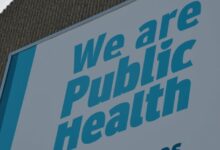Better healthcare, better tomorrow
The plan developed by Doug Ford’s Conservative government to tackle the critical situation in the province’s hospitals, particularly in emergency services and surgery, unfolds in three steps. The situation – which is far from good, let alone perfect – calls for “bold, innovative and creative” decisions, according to Health Minister Sylvia Jones.
With the objective of reducing waiting times and guaranteeing more than 14,000 cataract surgeries per year, this plan foresees, as a first step, investment in new partnerships “with community surgery and diagnosis centers”, whether they are non-profit or for-profit clinics. This first step includes an additional $18 million for other procedures such as MRI and CT scans, eye surgeries, minimally invasive gynecological surgeries, and plastic surgeries.
And if this seemed, at first glance, to be a temporary strategy, Doug Ford clarified that the changes are, in fact, permanent. What remained to be detailed was how these clinics will be funded and if there is any kind of guarantee that this plan will actually have general value within the Canadian health care system.
Milénio Stadium wanted to understand how all this situation is seen by those who live and feel on a daily basis the drama that is currently health care in Ontario. We talked with the Ontario Medical Association (OMA), which, as representative of the province’s physicians, is dedicated to defending the health and welfare of its members and the entire population.
Milénio Stadium: The crisis that is being felt in Canadian hospitals is not something recent: even though, for sure, there have always been points that could be improved… can we see the pandemic as the “match” that lit the fuse for the critical situation we are currently experiencing?
Ontario Medical Association: The COVID-19 pandemic tested Ontario’s health-care system in unprecedented ways, highlighting the cracks that existed before the virus arrived here in March 2020. As we emerge from the acute phase of the pandemic, Ontario’s health-care system is in dire need of immediate solutions to improve patient access to care and increase capacity. During the pandemic, our workforce and resources were pushed to the limit. OMA data also shows 22 million fewer health-care services happened during the pandemic than would have been expected. The pandemic also proved that we cannot have a strong economic recovery without a strong health-care system. The OMA has an integrated plan for rebuilding the health-care system: the Prescription for Ontario: Doctor’s 5-Point Plan for Better Care.
MS: Can we see the insufficient provincial government’s investment in the public health sector as one of the main reasons that led to this whole situation?
OMA: Fixing Ontario’s health-care system will not be quick or easy and will require collaboration among health providers, support from the public and political will at various levels of government. Today’s challenges have been at least 30 years in the making, due in part to chronic underfunding. At the federal level, Ontario’s doctors are calling on the federal government to increase the Canada Health Transfer from the current 22 per cent to 35 per cent of provincial-territorial health-care spending. But the OMA’S plan also includes three solutions the provincial government could implement in the short term to improve access to patient care and relieve pressure on the system:
1. License more foreign-trained physicians, through a government assessment program to assess who is ready to practice.
2. Reduce wait times by increasing funds to clear the pandemic backlog and creating a centralized wait list and referral system so that patients with the greatest need go to the front of the wait list.
3. Moving more palliative patients out of hospitals into the community, embedding care co-ordinators in primary care, and equipping all long-term care homes with IV equipment and diagnostic tools to reduce hospitalizations.
MS: Besides the scarcity of resources, there is also the issue of the lack of qualified medical personnel. What can explain this reality and how could doctors/nurses and other essential staff be “retained” to provide this type of care in Ontario?
OMA: We know that at least 1 million Ontarians don’t have a family doctor, with the shortage especially acute in rural, remote and northern communities. As mentioned above, one of the key solutions is licensing more foreign-trained physicians, which could be done though a ready-assessment program to determine who is ready to practice. The government recently announced its plan to make it easier for doctors from other parts of Canada to work here, making Ontario the first province to move toward pan-Canadian licensure. The government is also creating a new medical school in Brampton, adding more medical student and residency positions. One of the main contributing factors to the doctor shortage is burnout, which continues to be a serious issue for Ontario’s doctors. Almost three-quarters of physicians surveyed by the OMA said they experienced some level of burnout in 2021, up from 66 per cent the previous year.
The OMA’s 2021 white paper Healing the Healers: System-Level Solutions to Physician Burnout, offered five key solutions:
1. Streamline and reduce required documentation and administrative work.
2. Ensure fair and equitable compensation for administrative work.
3. Increase work-life balance by making organizational policy changes.
4. Promote the seamless integration of digital health tools into physicians’ workflows.
5. Provide institutional supports for physician wellness.
MS: Can we look at the government’s decision as a “lightening of the shoulders” of a sector that is, in plain sight, overburdened, or, on the other hand, is there, for example, a factor that encourages the exit of professionals practicing in the public sector to the private sector?
OMA: As mentioned above, we know Ontario’s doctors are dealing with higher levels of burnout, with heavy administrative burdens being a key factor. And so we need to do everything we can to support our current doctors and get more into the system. When it comes to the government’s recent announcement on new community surgical and diagnostic centres, we support the goal of reducing wait times and clearing the surgical backlog by safely moving some diagnostic tests and low-risk surgeries and procedures out of hospitals. But we also believe they must adhere to certain key principles. One of those principles is having a health human resources strategy to ensure these new clinics do not take resources away from hospitals or exacerbate existing HHR challenges including burnout.
MS: Could the public sector’s backlog be so large that change becomes, more than urgent, necessary? Even if this implies this more active and significant role of the private sector…
OMA: Wait times were an issue before the pandemic, with many being longer than provincial guidelines and we must reduce this backlog of care. While we agree with the government that the status quo is no longer acceptable and that bold action is needed to fix the cracks in the system, we will also be monitoring these clinics to see whether they succeed in successfully shortening wait times and clearing the backlog.
Along with a robust HHR strategy, other key principals of these clinics include:
• being connected to hospitals and Ontario Health regions,
• ensuring quality of care and patient safety levels are just as high as in hospital settings and,
• ensuring these centres offer publicly-funded health-care services, operating within the Canada Health Act and not leading to a two-tier system or queue-jumping.
MS: Doug Ford insists that all services provided by private institutions will be paid for through the Ontario Health Insurance Plan, but many associations have warned that this will sooner or later turn out to be the complete opposite. What can we really expect to happen?
OMA: As stated above, Ontario’s doctors say these centres must operate within the Canada Health Act to ensure we don’t have a two-tier system. It’s important to note that some health-care services in Ontario’s system are already delivered privately. Family doctors’ offices themselves are private clinics where publicly-funded services are provided. But our position is clear: Any medically necessary surgery or test must continue to be funded by OHIP, as it is now.
MS: More specifically, what about doctors in the middle of all this? Will they benefit from this decision?
OMA: We know that similar clinics work well in other jurisdictions. Experience shows that similar community centres, compared to inpatient settings, provide surgery or procedure times that are shorter, with faster recovery rates and lower infection rates. Community centres can also provide care to 20 to 30 per cent more patients, with patients spending less time in these facilities than they do in hospitals. These centres work because they focus on specific surgeries or procedures. To ensure improved quality care for patients and less stress on doctors, we recommend the government create an implementation committee with stakeholders, including the OMA, to work on issues such as funding, HHR and how and when to move which procedures into community clinics.
Inês Barbosa/MS









Redes Sociais - Comentários